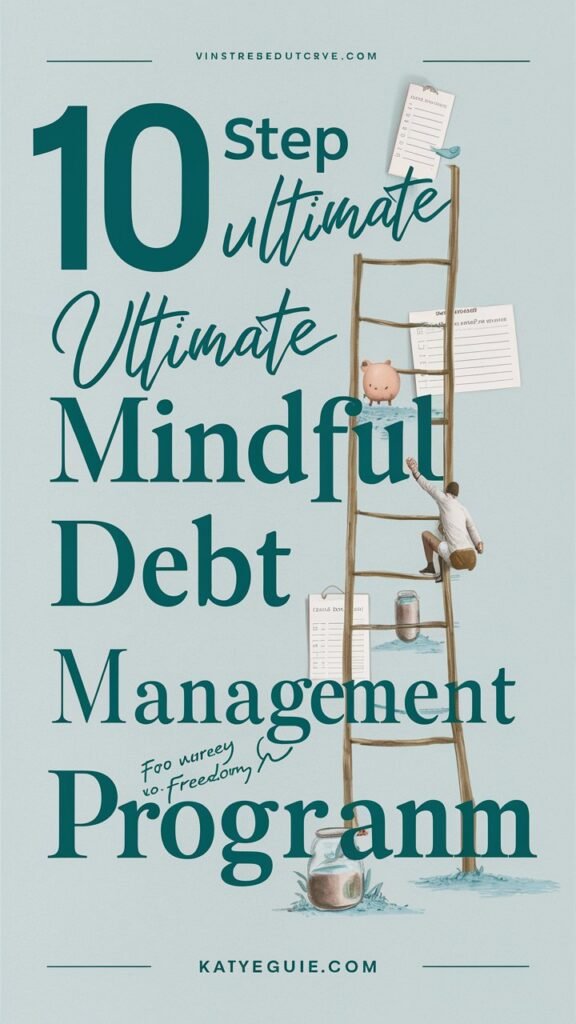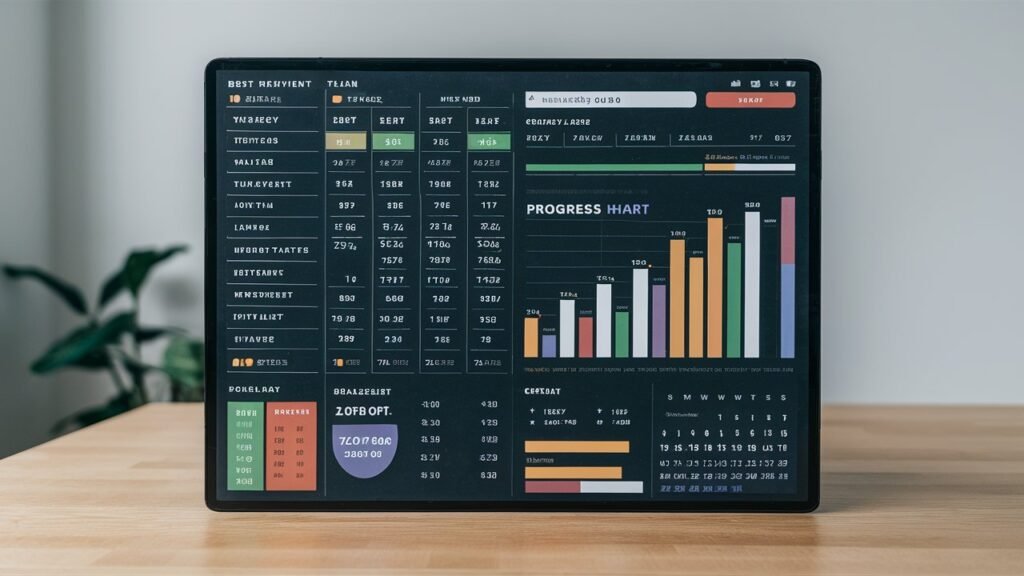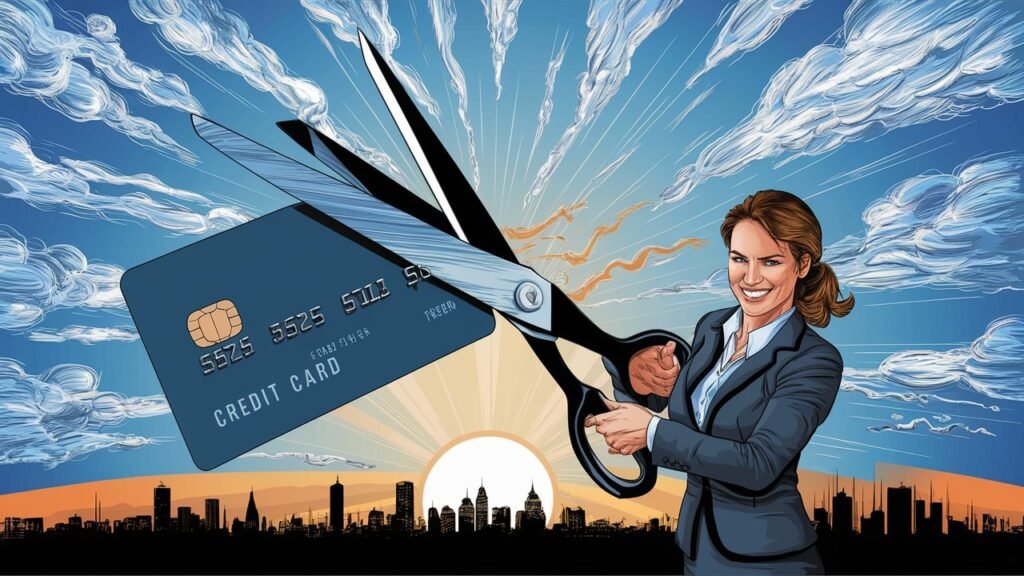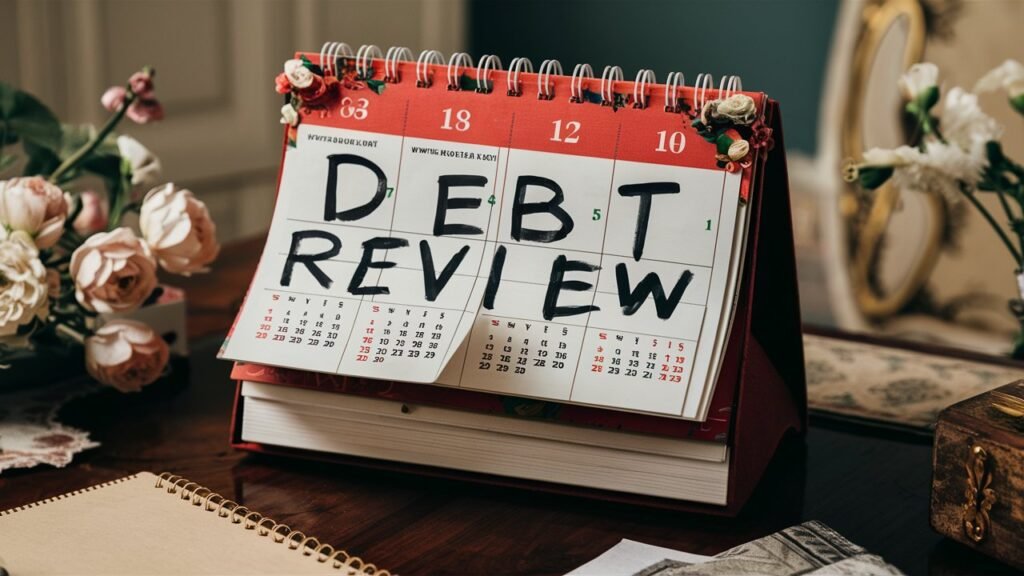
Introduction
Effective debt management is not only about paying off what you owe; it involves building awareness, creating intentional habits, and maintaining emotional balance throughout the process. In this guide, we’ll walk you through 10 actionable steps meant to help you understand, manage, and eliminate debt while building financial peace of mind.
The burden of debt can often be overwhelming on one’s finances and mentality. Be it credit cards, student loans, or medical bills, carrying debt enables one to be stressed, compromise financial freedom, and focus on plummeting goals. The silver lining? Regain control with mindful debt management.
What Is Mindful Debt Management?
Mindful debt management is the exercise of developing an awareness and active decision-making regarding your financial state to mitigate and stave off debt. It comprises unraveling the causes of such debt, living within the present against any features of your financial decision-making, and molding one’s habits in equal measure to settle with one’s long-term goals.
Benefits of Mindful Debt Management
- Reduced financial stress.
- Awareness of financial goals.
- Improved decision-making when it comes to spending and saving.
- Attainment of financial freedom in the long run.
10 Steps to Mindful Debt Management
1. Acknowledge and Accept Your Debt
Mindful debt management begins with accepting your financial reality. Ignoring or avoiding your debt only prolongs your problems.
- Get a complete listing of all your debts, such as credit cards, personal loans, and medical bills.
- Note down the balance on each account, what the interest rate is, and the due date.
Mindful Tip: Be gentle on yourself. Debt is an incredibly heavy burden!
2. Understand the Root Causes of Your Debt
Debt curtails down to mannerisms usually of social way or something unforeseen. Spotting the underlying cause enables one to avoid such mistakes in future.
- Ask yourself: Was I in debt because of overspending, an emergency, or lack of financial planning?
- Think about the emotional triggers, such as stress or impulse shopping, behind your spending behaviors.
Mindful Tip: Try keeping a little money journal where you can explore your relationship with money and spending.
3. Set Clear and Achievable Financial Goals
Setting goals gives purpose and direction to your debt repayment plan.
- Short-term goals: Paying off a credit card or reducing overall debt by 10%.
- Long-term goals: Becoming debt-free or saving up for a major life event.
Mindful Tip: Envision how life would be after achieving these goals to remain motivated.
4. Create a Detailed Debt Repayment Plan
Now is the time to work. Choose a repayment plan that’s more convenient given your financial situation:
- Debt Snowball Method: Take on the smallest debt first, then move to larger debts-this method offers psychological wins.
- Debt Avalanche Method: Really focus on high-interest debts first so that you can save money in the long run.
Mindful Tip: However, automate payments so you don’t incur late charges.
5. Build an Emergency Fund
An emergency fund allows you to avoid the lure of new debt-taking if out-of-the-ordinary expenses come your way.
- Start small: save $500 to $1,000.
- Build it gradually to encompass 3-6 months of living expenses.
Mindful Tip: Store it in a separate account.
6. Practice Mindful Spending
Mindful spending means being intentional with every purchase.
- Create a budget, giving priority to needs ahead of wants.
- Use the 10-second rule: put down the item and ask yourself,
Mindful Tip: Finally, track daily spending to become aware of it.
7. Negotiate with Creditors
If it seems that you can no longer afford the debt, please contact creditors. Most of them will give you options such as:
- Lowering interest rates.
- Extending payment terms.
- Debt consolidation programs.
Mindful Tip: Practice a script and remain calm in your negotiations.
8. Avoid Taking on New Debt
You need discipline to break the cycle of debt.
- Use cash or debit cards more frequently, rather than credit.
- Set a limit on discretionary spending on each month’s budget.
Mindful Tip: Celebrate the victory of having survived a week without using credit at all.
9. Educate Yourself About Personal Finance
Knowledge is power when it comes to debt management.
- Read books or take courses on budgeting, investing, and saving.
- Follow financial experts for a chance at tips and motivation.
Recommended Reading: The Total Money Makeover by Dave Ramsey and Your Money or Your Life by Vicki Robin.
10. Regularly Review and Adjust Your Plan
Debt management is an ongoing process that requires adaptation to life’s changes.
- It is essential to evaluate your progress on a monthly basis.
- Be ready to modify your budget or repayment strategy should there be any alterations in your income or expenses.
Mindful Tip: Utilize progressive tools related to budgeting.
How Mindful Debt Management Reduces Stress
Mindfulness is about other things, not just finances-it’s about emotional wellness, too. To remain present and intentional, one has to:
- Allow guilt or shame for being in debt to go.
- Take small, doable steps in the direction of what might seem overwhelming goals.
- Feel good about themselves for progressing in steps.
FAQs
1. What is the fastest way to pay off debt?
The fastest way is the Debt Avalanche Method, where you focus on high-interest debts first while making minimum payments on others.
2. How can mindfulness improve my financial habits?
Mindfulness helps you stay aware of spending triggers, avoid impulsive decisions, and align your actions with your goals.
3. Should I save money or pay off debt first?
It’s important to build a small emergency fund before aggressively tackling debt. This prevents taking on new debt in emergencies.
4. Can I negotiate my debt even if it’s in collections?
Yes, many creditors and collection agencies are open to negotiation, especially if you can pay a lump sum or set up a payment plan.
5. How long does it take to become debt-free?
It depends on your debt amount and repayment strategy, but consistent effort can significantly reduce the timeline.
Conclusion
Mindful debt management concerns more than just numbers, but rather establishes a certain type of bond with money and intentional decisions that manifest freedom. Following these 10 steps enables you to take back control of finances, lessen stress, and work towards a debt-free life.
Remember, every small step counts. Start today, stay consistent, and celebrate each milestone along the way.
Take the first step to financial freedom today. Start your mindful debt management journey and reclaim control over your future!”













